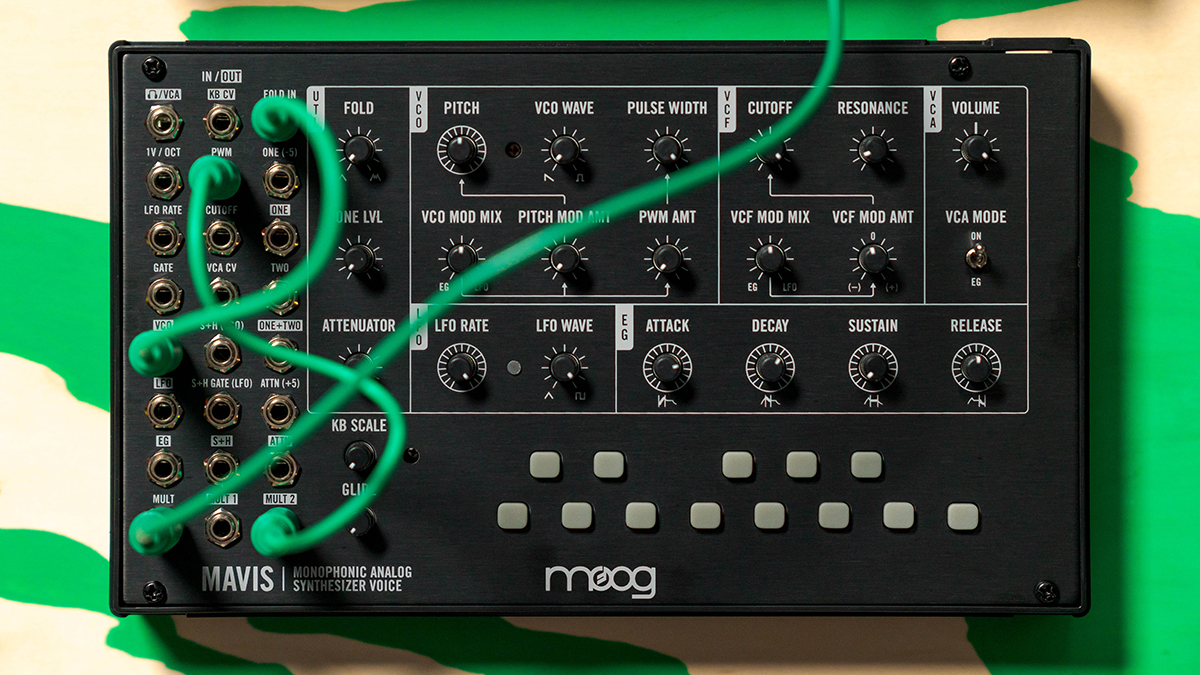Meet Mavis, the affordable Moog analogue synth that you can build yourself
Use it on its own or as part of a Eurorack or Moog semi-modular setup
• GEAR EXPO SUMMER 2022: all the latest gear from NAMM and beyond
Moog has released Mavis, a semi-modular synth that’s designed for those who crave that classic Moog sound but don’t want to pay too much for it.
As well as operating as a standalone instrument, this is also designed to slot nicely into your Eurorack setup or Moog semi-modular system. It comes with a 24-point patch bay and a single VCO with pulse width modulation, waveform mixing and mod source mixing.
Predictably, you’ll also find a -24dB low-pass ladder filter, along with an audio rate LFO and 4-stage envelope generator. Uniquely on a Moog synth, there’s also a wavefolding circuit, bringing additive synthesis into play. The modular utilities section, meanwhile, includes attenuators, offsets, mults, and a DC-coupled mixer.
Finally, there’s a patchable sample and hold circuit, which generates a random CV pattern that can be used to modulate other parameters. One application of this is to set Mavis into a ‘random sequencing’ performance mode.

Like a number of previous Moog instruments, Mavis is designed to be assembled by the owner. The build is said to be pretty simple, though - no previous experience is required, and there’s no soldering required.
The finished instrument - which comes with a fitted protective cover - includes a one-octave keyboard so that you can start playing immediately, while patch books and educational materials are on to help you start patching and designing sounds.
Get the MusicRadar Newsletter
Want all the hottest music and gear news, reviews, deals, features and more, direct to your inbox? Sign up here.
Mavis is available now priced at $349. Find out more on the Moog website.




I’m the Deputy Editor of MusicRadar, having worked on the site since its launch in 2007. I previously spent eight years working on our sister magazine, Computer Music. I’ve been playing the piano, gigging in bands and failing to finish tracks at home for more than 30 years, 24 of which I’ve also spent writing about music and the ever-changing technology used to make it.









